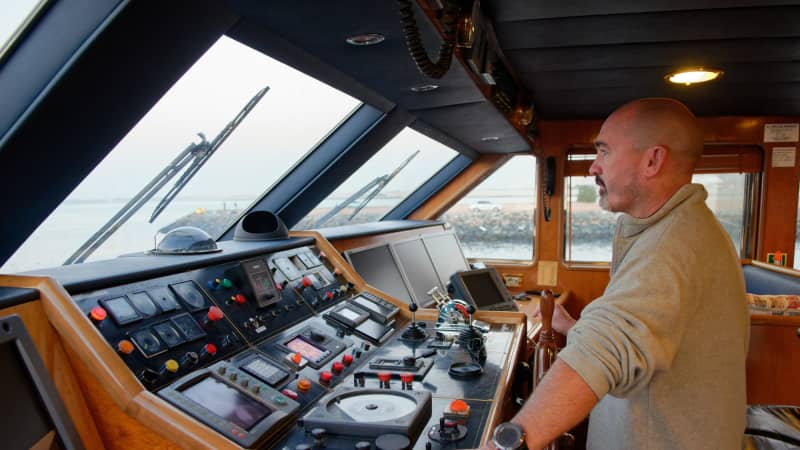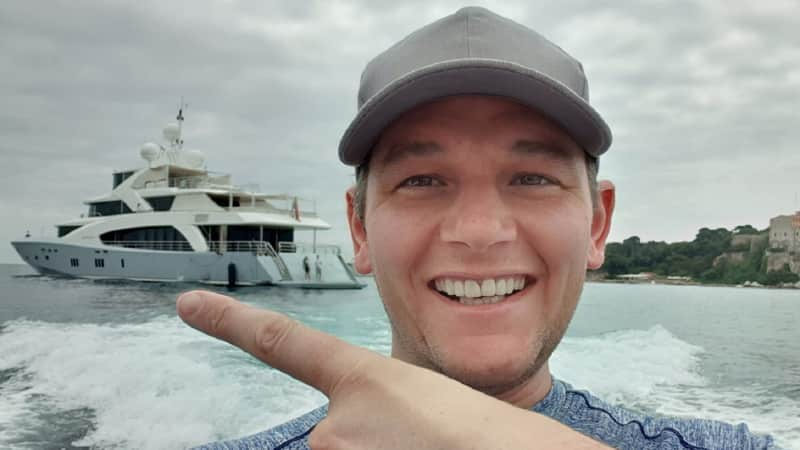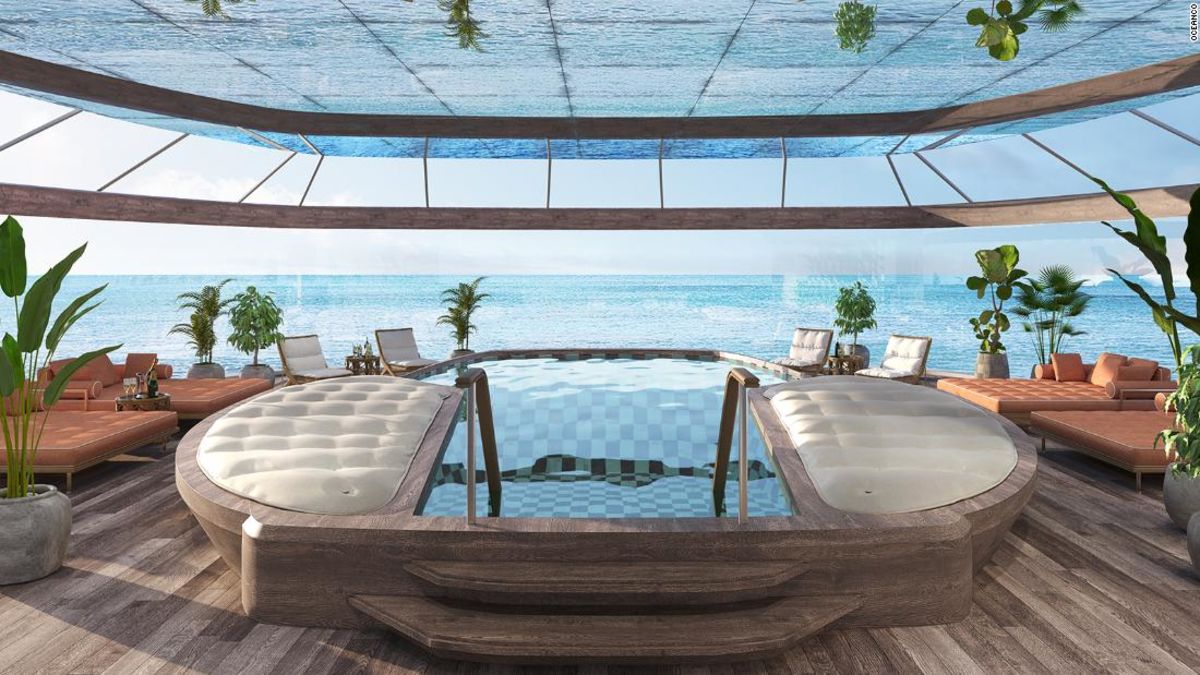Products You May Like
(CNN) — The symbols of Dubai’s transformation into a global city are on show wherever you look in the “City of Gold,” from soaring skyscrapers to five-star hotels and Michelin-starred restaurants.
For leisure and business visitors to Dubai, the view from the shore suggests indulgence, relaxation and glamor. But it’s a different story for the specialist staff at work on board these luxury vessels.
CNN spoke to workers in five key roles to reveal the ups and downs of their experience on the waves.

Superyacht ‘Fast & Furious’ on a voyage in Dubai.
Alessio Bernacchi/JLS Yachts
The captain
One captain who spoke to CNN – who asked not to be named to protect his livelihood – first arrived in Dubai as a tourist in 2007.
The city struck him as a safe place to raise his family and he has remained ever since, captaining a succession of yachts that are typically more than 40 meters long.
Trips tend to be shorter than in the Caribbean or Mediterranean he says, with yachts sometimes rented by the hour rather than days.
In the early days, the skipper recalls a lax regulatory environment in which “anyone holding a speed boat license was a yacht captain.” But this has changed in recent years with increasingly onerous requirements for safety and qualifications.
The low bar to entry contributed to lower salaries for yacht captains than other parts of the world, he says, although they have climbed as standards have risen and tend to correlate with the size of vessel.
A captain is notionally the most important decision-maker on a vessel. But in Dubai his expertise often comes second to the whims of the owner.
“You can have owners who want to take a boat somewhere it is not allowed to go,” he says, recalling a 26-year-old owner who told him to drop anchor in a restricted zone. “You have to be tactful but follow the rules.”
He has also had issues when asked to multitask in roles beyond his remit, such as delicate repair jobs that would usually fall to a specialist engineer.
But the captain’s job has been made easier by advances in Dubai’s yachting industry, according to Captain Mike Fetton, who has transitioned from captaincy to management of his own company JLS Yachts.
“The improvement of facilities and infrastructure over the past few years has been phenomenal,” he says.
“Four years ago you would have struggled to find a dock for vessels over 70 meters but now there are new (superyacht) berths coming online all the time.”

Captain Mike Fetton aboard the superyacht ‘White Knight’
JLS YACHTS
The chef
David Buchanan has served as private chef to VIPs including royalty over several years on superyachts in Dubai, Kuwait, and elsewhere in the region.
His bookings in the Middle East came after working for royal families in Europe, which he believes was an important qualification for the jobs.
“I reckon once you are on the inside and you can be trusted you are ‘in the circle’,” says Buchanan. “People value their privacy and want to know they aren’t having to watch what they say.”
Some elite clients have the exotic tastes one might expect. Buchanan says one wealthy passenger requested a meal of badger, but he could only offer ostrich, kangaroo, and crocodile.
He has also fielded requests for rare flower petals and brands of mineral water that had to be freighted by air.
Provisioning can be a challenge. The chef recalls having supplies waiting in one port, “and then the boss hauls anchor and you wake up miles away and have to get the produce from elsewhere.”
On other occasions, superyacht owners’ demands can be surprisingly humble.
“Some clients like heated leftover lasagne,” says Buchanan. “You have to check your ego at the passerelle (bridge) – what you like to make is often not what the client likes to eat.”
One aspect of working on a Dubai superyacht that does tend to be regular and dependable is the size requirements.
“One symbol of wealth is to provide a feast at mealtimes,” says Buchanan. “The focus is often more on volume than quality.”
Employment terms can be a mixed bag, the chef says.
The package – including accommodation and provision for families – is typically better than on yachts in the Mediterranean. But salaries in Dubai “tend to be lower than industry level.”

Chef Buchanan enjoying the waves.
David Buchanan/Facebook
The engineer
As a chief engineer, Blake Holloway’s duties range from the relatively trivial – such as fixing TVs – to potentially life-or-death situations.
At the latter end of the scale there are “different types of emergencies,” he says. “You might get a fire, a leaking pipe, or an engine with a crack.”
On one journey the hydraulics in the engine room blew out, Holloway recalls, incapacitating the thrusters and leaving the ship drifting perilously. He was eventually able to restore control through a creative fix of filling the hydraulic system with engine oil.
Holloway’s work relies on swift sourcing of tools, which can be a challenge. “You have to find particular items at the drop of a hat,” he says.
Life on a superyacht in Dubai can be a little lonely, Holloway suggests, as crews are typically drawn from across the world which can lead to language and cultural barriers.
But this is counterbalanced by an events calendar that rarely allows for boredom.
“There is always something happening that can involve yachting, whether it is racing or New Year’s Eve fireworks,” Holloway reflects.
The stewardess
The role of a “stew” changes constantly, says Amilyn Serrano, who has been working in Dubai since 2013.
“I am responsible for the inventory of food and drinks, cleaning…flower arrangements and setting tables for the meals,” she says. “Every day is unique and that is the most interesting part of being a stew.”
Serrano says life at sea has a romantic appeal — no two sunsets look alike — but working in Dubai can be physically challenging.
“It is really hard to work during summer because of the heat, humidity, and sandstorms,” she says. “We work outside and suffer a lot during this time.”
Not every voyage goes to plan. Serrano says her most memorable trip was from Palm Jumeirah in Dubai to a Formula One race in Abu Dhabi, which was beset with problems.
“It was the captain’s first time to go to Abu Dhabi and it was bad weather,” she recalls. “The trip took 11 hours…the GPS was broken and we were lost in the middle of the sea.”
The watersports instructor
Guests have plenty of downtime on a cruise and “superyachts generally have top-of-the-range toys,” says British watersports instructor Nic Thompson.
Popular pursuits include diving, jetskis, and flyboarding, a current favorite that involves the rider being lifted into the sky by a high-powered jet of water.
Jetski rides can be dangerous, says Thompson, who has seen serious accidents and tries to steer clients away from them.
Superyachts tend to come with towable rides such as donut boats. “You can also find water slides coming off the side of some yachts which is quite interesting to see,” the instructor says.
Thompson has also had to step in and resolve emergencies such as “people that have had too much to drink and fall off the boat.”
At other times the lifestyle is sedate. Older clients tend to be less interested in watersports and prefer to spend their days lounging on deck – which means a break for the instructor.
“It can be challenging and it can be rewarding,” Thompson concludes. “Out in the middle of nowhere when your phone runs out of signal you just look around and there are no worries.”

